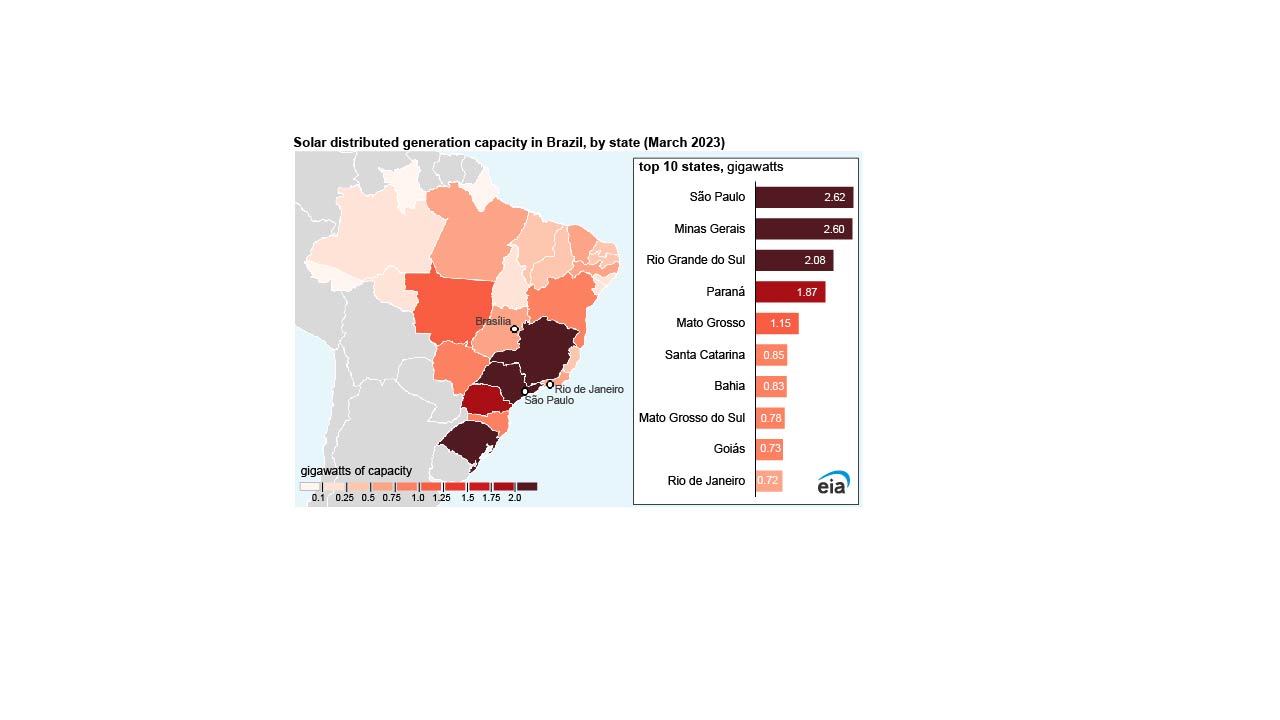
Brazil’s growth in distributed generation capacity from renewable resources—especially solar—has increased rapidly since the country implemented net metering policies in 2012. As of March 31, 2023, home and building owners have installed more than 1.8 million renewable distributed generation systems in Brazil, totaling about 19 gigawatts (GW) of capacity, the vast majority of which is solar, according to the Brazilian Electricity Regulatory Agency (ANEEL).
Unlike centralized generation, where power plants produce electricity and send it long distances over power lines to customers, distributed generation is produced near the point of use, for example, solar arrays on the rooftops of homes and businesses. In Brazil, solar photovoltaic dominates the distributed generation sector, representing 99% of the country’s total distributed generation capacity. Small hydroelectric and wind account for the remaining 1%.
Qualified generators can choose to sell surplus generated electricity back to Brazil’s national grid in return for billing credits. As part of the billing credit structure, net-metering customers can generate credits earned on days when they generated more electricity than they consumed.
The states in Brazil with the most distributed solar capacity are in the South and East regions of the country: São Paulo (2.62 GW), Minas Gerais (2.60 GW), Rio Grande do Sul (2.08 GW), and Paraná (1.87 GW). In March 2023, São Paulo surpassed Minas Gerais in solar distributed generation capacity. São Paulo has more potential for distributed generation capacity because of the state’s larger population size and better economic conditions.











